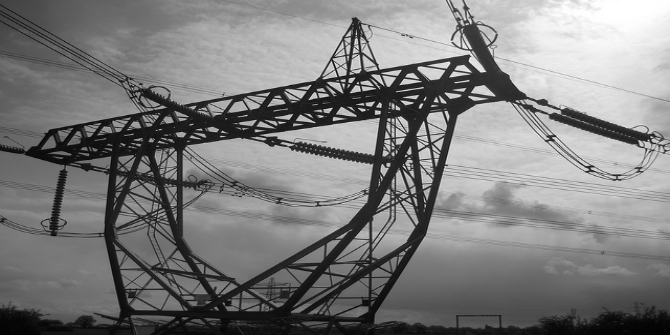The UK Government’s latest step to support the development of carbon capture usage and storage has been undermined by its simultaneous moves to press ahead with new oil and gas projects. Esin Serin argues that the Government’s approach to developing the technology needs an urgent rethink if the UK is to remain on track to meet its net zero targets.
Carbon capture, usage and storage (CCUS) has been deemed a “necessity not an option” by climate change experts for the UK to deliver net zero emissions. But the Government announcing its support for two new CCUS clusters (shared infrastructure to transport and store carbon from multiple emitters) at the same time as its decision to grant hundreds of new oil and gas licenses has fuelled concerns that the technology is instead being used as an excuse for the country to drill more oil and gas. The newly appointed Secretary of State for Energy Security and Net Zero Claire Coutinho has an urgent task to allay these concerns and reinstate CCUS as part of a genuine emissions reduction strategy for the UK towards net zero.
CCUS is a necessary part of the UK’s transition to net zero
CCUS can enable emissions reductions across industrial processes, electricity generation and hydrogen production. CCUS provides the only deep decarbonisation option available in parts of industry where majority of emissions result from the process of chemical transformation (such as in cement production) as opposed to burning of fossil fuels. In the electricity sector, CCUS can be used in conjunction with a small number of gas-fired power stations to help deal with the variability of output from renewables if other mechanisms, such as electricity storage or demand management, are not feasible or economic on sufficient scale. CCUS can also be used to produce so-called “blue hydrogen” which can substitute for fossil fuels in some industrial processes or other hard-to-abate activities, such as heavy goods transport.
Crucially, CCUS can also be used with bioenergy or direct air capture to remove existing carbon dioxide (CO2) from the atmosphere to generate so-called negative emissions. This will be necessary to compensate for residual emissions in sectors where it has not been possible to eradicate all emissions.
Overall, the evidence is clear that the UK would have minimal chance of reaching net zero by 2050 without employing CCUS. Developing a strong domestic CCUS industry is also set to open up important economic opportunities for the UK from a growing export market. The Government’s support for two new CCUS clusters in itself is thus welcome.
The evidence is clear that the UK would have minimal chance of reaching net zero by 2050 without employing CCUS.
CCUS should be part of (not an excuse to delay) an overarching push for clean technologies
Nevertheless, there remain significant challenges to the widespread use of CCUS. For instance, there is much still to be understood about the feasibility of long-term geological storage of CO2 – a critical part of the CCUS process. This is demonstrated in reports from the Gorgon Project in Australia (where problems like sand contamination are obstructing CO2 injection) and the Sleipner Project in Norway (where stored CO2 has shown unexpected behaviour in the subsurface).
In addition, it has been argued that investments in the development of CCUS could divert funding away from other clean technologies or create a form of moral hazard by reducing the pressure to cut emissions if they can be compensated by negative emissions.
It is against this backdrop that the Government’s decision to grant hundreds of new oil and gas drilling licenses announced simultaneously with its support for two new CCUS clusters has raised concerns as the former is seen as a sign that the Government intends to slow down the domestic transition away from natural gas towards cleaner sources of energy. New development in the North Sea risks contributing to a further oversupply of fossil fuels globally and would not help the UK’s energy security in any significant way either.
CCUS should be developed alongside an urgent push for other clean technologies – not as an excuse to delay it.
The Government risks under-delivery where there is an undeniable need for CCUS
CCUS should be scaled up urgently where realistic alternatives do not yet exist, or where using CCUS over other clean alternatives would bring clear cost-efficiency benefits, while proactively managing the risk of the UK being locked in to avoidable use of natural gas as a result of CCUS development. The Government’s sector-level delivery plans currently fall short of the mark.
The Government’s sector-level delivery plans currently fall short of the mark.
Cement production is an area where there is an undeniable need for CCUS as the only deep decarbonisation option currently available, but also where Government policy to drive the development of the technology is severely lacking. UK CCUS policy so far has focused primarily on industrial clusters, but the majority of emissions from UK cement arise from production facilities in dispersed sites located outside of these industrial clusters. The Government currently lacks a formal strategy to enable CCUS in dispersed sites and has shied away from committing to the recommendation of the Independent Review of Net Zero to develop one by 2024.
How CCUS-based CO2 removal can be developed without disincentivising urgent emissions reductions is a complex question that warrants its own dedicated discussion (see this commentary for one). In any case, the need for the UK’s first CCUS-based removal projects to be up and running in the 2020s is well-established, both by the advice of the UK’s Climate Change Committee (CCC) and by the Government’s own ambition for at least 5 million tonnes of CO2 (MtCO2) removal through CCUS-based techniques annually by 2030. Against this context, it is highly worrying that no CO2 removals project has yet been progressed to negotiations for Government support under the cluster sequencing programme.
… and over-delivery where CCUS threatens the development of alternatives
There are a number of ways to produce hydrogen in a low-carbon way. Here, developing blue hydrogen (derived from natural gas with resulting emissions captured by CCUS) alongside green hydrogen (produced through electrolysis powered by renewables) while the latter comes down in price is justified as a way to kickstart the hydrogen market cost-effectively. However, demand for hydrogen in the UK’s transition to net zero is highly uncertain – and so is how much of this demand will need to be met from CCUS-based production, given electrolyser costs could fall faster than currently anticipated (as happened for many green technologies in the past, such as solar photovoltaics).
Developing too much CCUS-based hydrogen production capacity too soon could lock the UK into avoidable consumption of gas and delay the transition to green hydrogen. It therefore seems perverse that the Government has progressed two CCUS projects for hydrogen production (bpH2Teesside and HyNet Hydrogen Production Plant) to negotiations for support, with a combined annual capture capacity (2.81 MtCO2) that already exceeds what the CCC’s balanced pathway assumes for the sector annually by 2030 (1.64 MtCO2). In total, there are 11 capture projects for hydrogen production currently planned in the UK, four of which were already shortlisted to be considered for Government support (including two already invited for negotiations). Progressing even just the shortlisted projects within this decade would risk making the sector extremely vulnerable to locking in reliance on gas.
The three CCUS projects for the power sector shortlisted for Government support so far make up about a third of the annual capture capacity that the CCC’s balanced pathway sees the sector reaching by 2030 (12.43 MtCO2). While this is far from the risk of over-delivery apparent in the hydrogen sector, CCUS could still crowd out investment in renewable alternatives in the power sector if developed negligently.
CCUS policy needs a course correction for the UK to remain on track to net zero
The Government’s current plans risk under-delivery of CCUS where the technology is an indisputable necessity and over-delivery where developing too much CCUS would lock the UK into avoidable gas consumption. Addressing these risks calls for an urgent course correction from the newly appointed Secretary of State to fully align UK CCUS policy with the delivery of net zero in the country by 2050.
All articles posted on this blog give the views of the author(s), and not the position of LSE British Politics and Policy, nor of the London School of Economics and Political Science.
Image credit: Shutterstock







